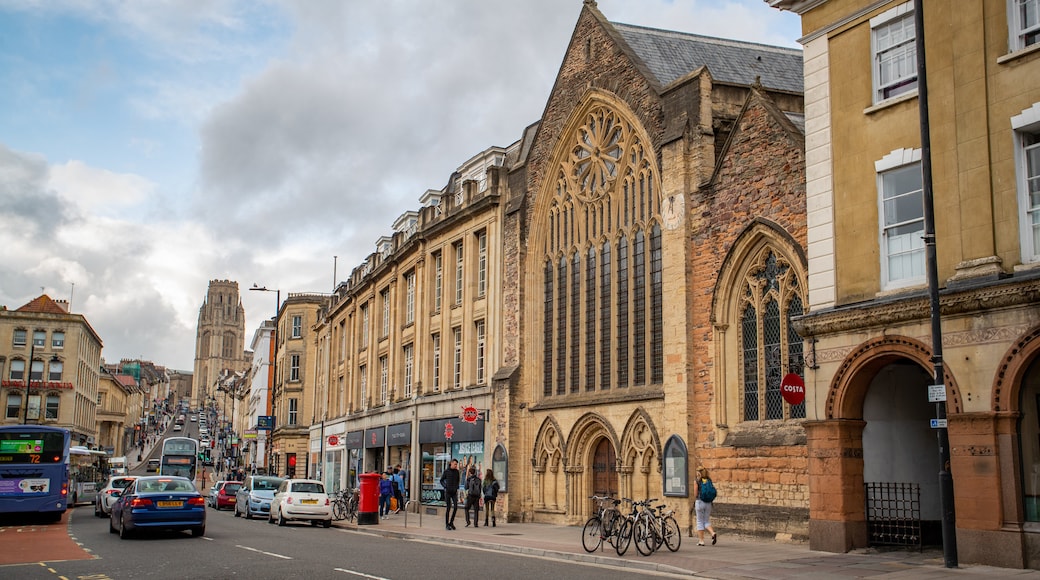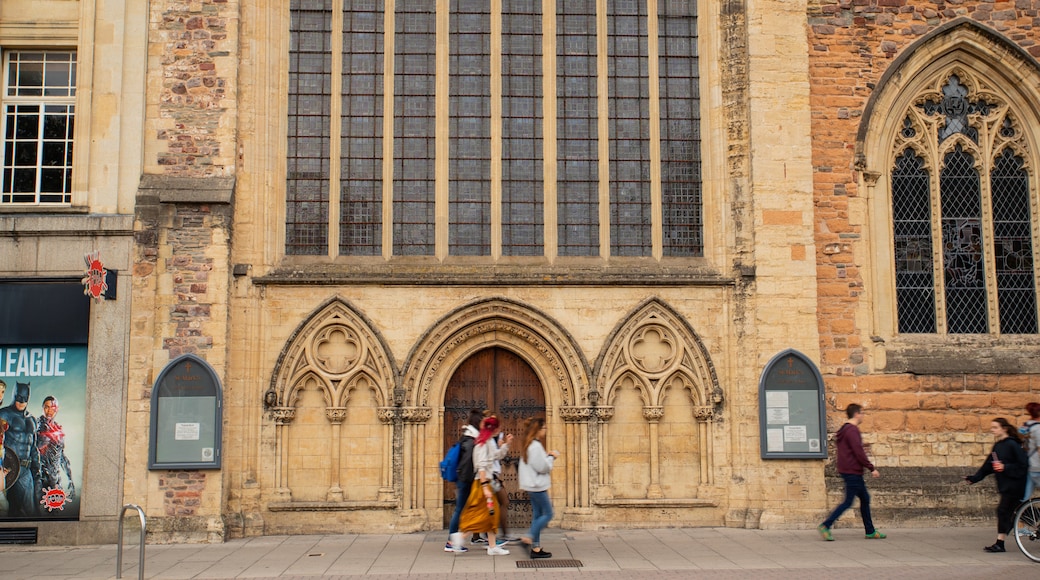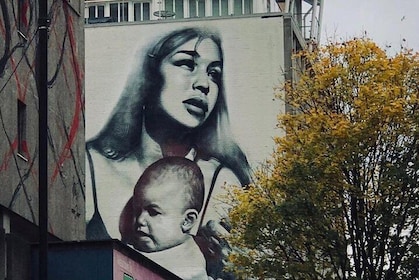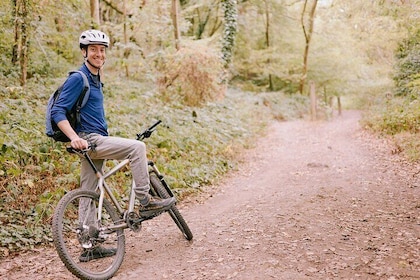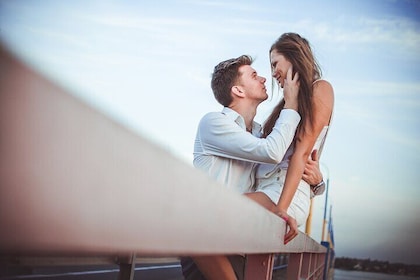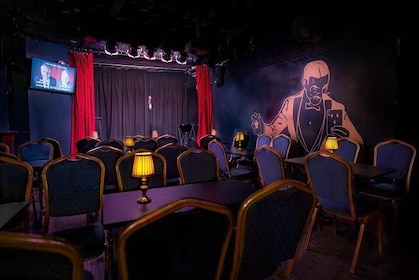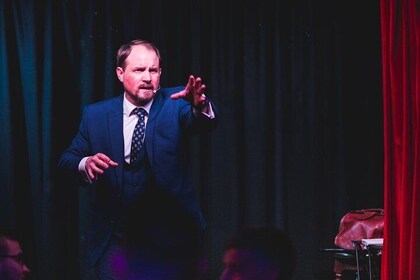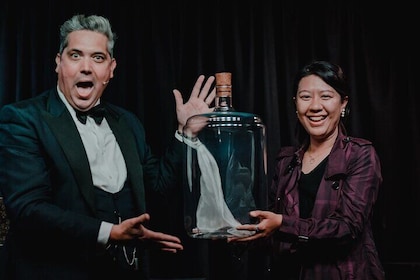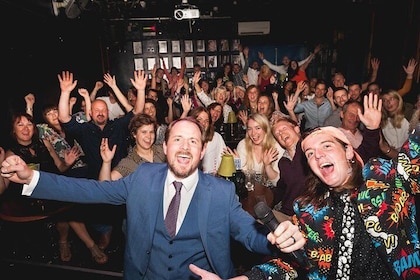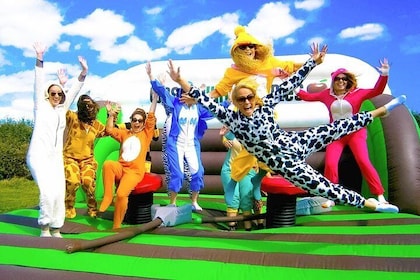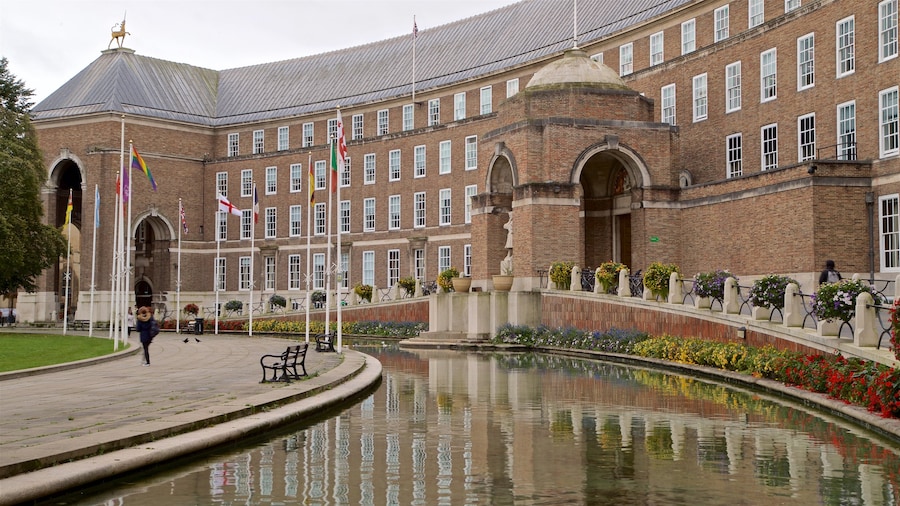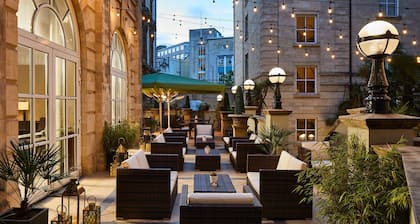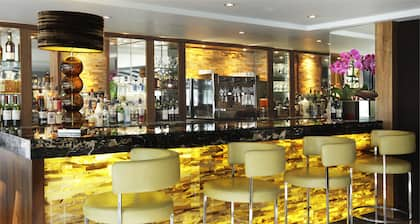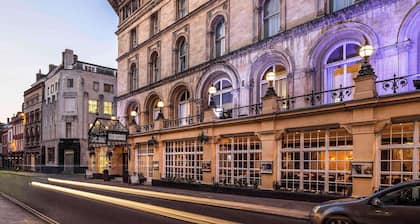The Lord Mayor’s Chapel is one of several medieval landmarks that still stand in the city of Bristol. Discover eight centuries of religious devotion, admire old artifacts and attend organ recitals. The Lord Mayor’s Chapel is the last-surviving buildings of the Hospital of St. Mark, established in 1220 as part of St. Augustine’s Abbey (now Bristol Cathedral). It became a place of worship in 1687 and today is the only municipally-owned church in England.
Other than the west facade and entrance, the remainder of the chapel is enclosed by newer buildings. Huge perpendicular windows dominate the facade, the largest of which features a 12-petalled rose window. The tower was built in 1487. Make your way down the alley that leads to the rear of the building, from where it’s possible to study the tower’s decorative carvings and grotesques.
The richly ornamented interior presents a stark contrast to the exterior of the chapel. Notable features are the fan-vaulted ceiling and Spanish floor tiles of the 16th-century Jesus Chapel (or Poyntz Chapel). Find the stone effigies of two unnamed knights, often believed to be the founders of the Hospital of St. Mark. The stained-glass windows showcase English, French, Flemish and German design styles.
Another notable aspect of the chapel is its organ, which dates back to the 1800s and has been rebuilt on several occasions since. Today, the console and pipes sit on opposite sides of the chancel and are controlled by wireless technology. Listen to the organ at mass services and free concerts, the latter held on most Saturdays.
The chapel stands on the northeast edge of College Green public park. On the opposite side of the park is Bristol Cathedral. Public buses stop close by and Bristol Temple Meads train station is a 25-minute walk away.
The Lord Mayor’s Chapel is open from Wednesday to Sunday and admission is free. Information booklets are available at the entrance.
